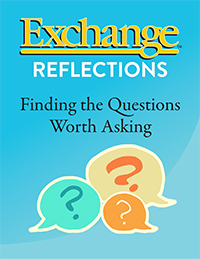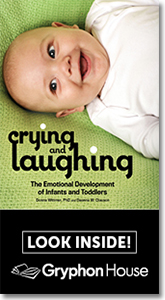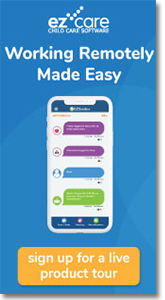ExchangeEveryDay Past Issues
 << Previous Issue
| View Past Issues | | Next Issue >>
<< Previous Issue
| View Past Issues | | Next Issue >> -Fred Rogers
The Harvard Center on the Developing Child website includes an article called “How to Help Families and Staff Build Resilience During the COVID-19 Outbreak.” Here is one of the suggestions they offer:
“Children’s development doesn’t pause during a crisis—and supporting that development and building resilience doesn’t have to take a lot of extra time or effort. Back-and-forth ‘serve and return’ interactions are simple and free, and you can do them during ordinary moments throughout the day. If your baby makes a coo or gurgle during a diaper change, make a sound back. If your toddler points to something, point at it too and say what the object is. Playing with a child is a great way to engage in serve and return—and relieve some stress for all.”
And in the newest Exchange Reflections, “Mental Health in Early Childhood,” based on an article by Mary Margaret Gleason and Allison Boothe Trigg, the authors write:
“Trauma and adversity come in many flavors – community-wide pandemics such as COVID-19, single events like a car accident or house fire, secret and sometimes chronic trauma such as sexual abuse, and ubiquitous and insidious adversity in the form of racism and injustice. Research has shown that adverse childhood experiences are associated with emotional, behavioral, and educational problems into adulthood, as well as physical health problems including respiratory disorders, heart attacks and even early death.”
The authors’ rich article includes many ideas worthy of discussion. They also offer a number of suggestions for building children’s resilience. They write: “All children will benefit from explicit attention to some core approaches to help them feel safe.” Here is one approach they recommend:
“Give words to emotions so children learn to connect organized words to their disorganized feelings (‘It’s hard to say goodbye. You look kind of sad right now.’)”
 |





Post a Comment